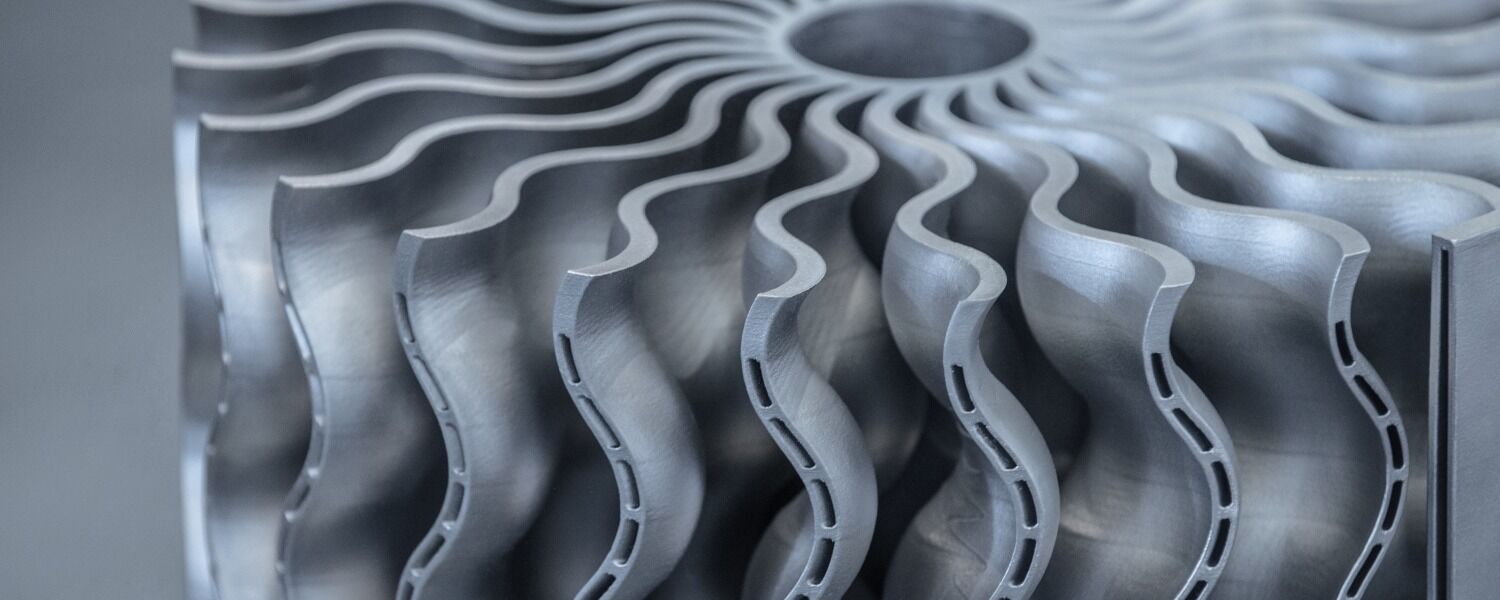Metal 3D printing is transforming heavy industry, opening up opportunities that would have never...
With the ability to optimise part designs, improve supply chain efficiencies and extend the lifespan of vital equipment, metal 3D printing is the innovative technology driving the manufacturing industry. Some of the biggest businesses in the industry are already harnessing the benefits of metal 3D printing, including BMW, NASA and Boeing, showing it’s a method worth the investment.
However, this doesn’t mean all parts should be created using metal 3D printing. We take a deeper dive into the benefits and key applications of manufacturing with metal 3D printing.
- Low Production Volumes
- Complex Parts
- Functional Prototypes
- Fabricating Obsolete Parts
- Fabricating Custom Tooling
Low Production Volumes
Perhaps the biggest benefit of metal 3D printing is that it’s cost competitive for producing intricate parts at small to medium-sized production quantities. This is because you can avoid the tooling and setup costs associated with casting and complex machining operations, which can significantly drive up unit cost for small-scale production.
If you’re looking to produce large quantities of a relatively simple part, then traditional manufacturing can be a more suitable solution.
Usually, small batch production runs are needed to create custom parts or produce multiple iterations of a design. In such cases, metal 3D printing can provide the flexibility to switch between designs without incurring additional fixed costs.
The on-demand and subscription-based services available for metal 3D printing give greater flexibility and the ability to produce spare parts quickly and easily.
Complex Parts
This is where metal 3D printing can provide its greatest benefits. Metal 3D printing can produce parts with complex and intricate geometries that would not be possible using traditional manufacturing methods. Metal 3D printing can create these complex parts much more quickly and cost efficiently.
Complex features such as overhangs or cavities can easily be made using 3D printing, without impacting on the production cost. This makes it an ideal production method for the creation of lightweight parts or parts that require internal cooling channels. In many cases, the use of support structures may be needed, however these can be minimised through correct build orientation planning.
Here are some examples of the types of parts best suited for metal 3D printing:
- Nozzles
- Valve components
- Rotors and impellers
- Heat exchangers
- Assembly housings/casings
- Brackets and mounting fixtures
- And more
Functional Prototypes
In an industry constantly evolving and changing, with the need for faster development cycles, creating functional prototypes through metal 3D printing can be extremely valuable for businesses.
Designs can be printed, tested and optimised quickly and easily using metal 3D printing, resulting in a superior final product.
Design engineers with knowledge of metal 3D printing can work closely with customers to understand the application requirements and develop optimised parts that improve both manufacturability and performance.
This design and prototyping process is accelerated as a result of 3D printing, enabling engineers to explore more solutions and compress their product development cycle.
Fabricating Obsolete Parts
As heavy industry continues to advance rapidly and equipment and technology change all the time, the obsolescence of parts is becoming an increasing issue for some companies.
That’s where metal 3D printing comes in.
To print a part, a 3D model is needed to load into the printer. For an obsolete part, a 3D model can be created from a 2D drawing or by scanning the original part. Once the CAD model has been created, the part can then be produced.
This opens up a whole world of opportunities for customers, as they can reproduce parts that are no longer available on the market. Managing obsolescence is critical for businesses, as the breakage or malfunction of an obsolete part can lead to costly downtime or the need to upgrade parts of their entire system.
Not only does metal 3D printing reduce this risk, but it also creates the opportunity to optimise the design of the obsolete part to further improve the reliability of critical equipment.
Fabricating Custom Tooling
Custom tooling may be required for certain companies, such as test jigs, assembly fixtures and cast injection molds, which can be costly to produce using traditional CNC machining. Metal 3D printing allows engineers to bypass steep overheads — printing small batch runs quickly — creating custom tooling at a low unit cost.
For this reason, 3D printing can also help you to reduce the cost and shorten the lead-time of scaling up your production volumes.
The Benefits Don't end There
If you’re looking to invest in the benefits of metal 3D printing, but you’re seeking some more information first, then download our guide to help you paint the picture. Transforming Heavy Industry Through Metal 3D Printing covers the technologies used, applications, lead times and benefits of metal 3D printing and is free to access.
Simply download by clicking the link below.



